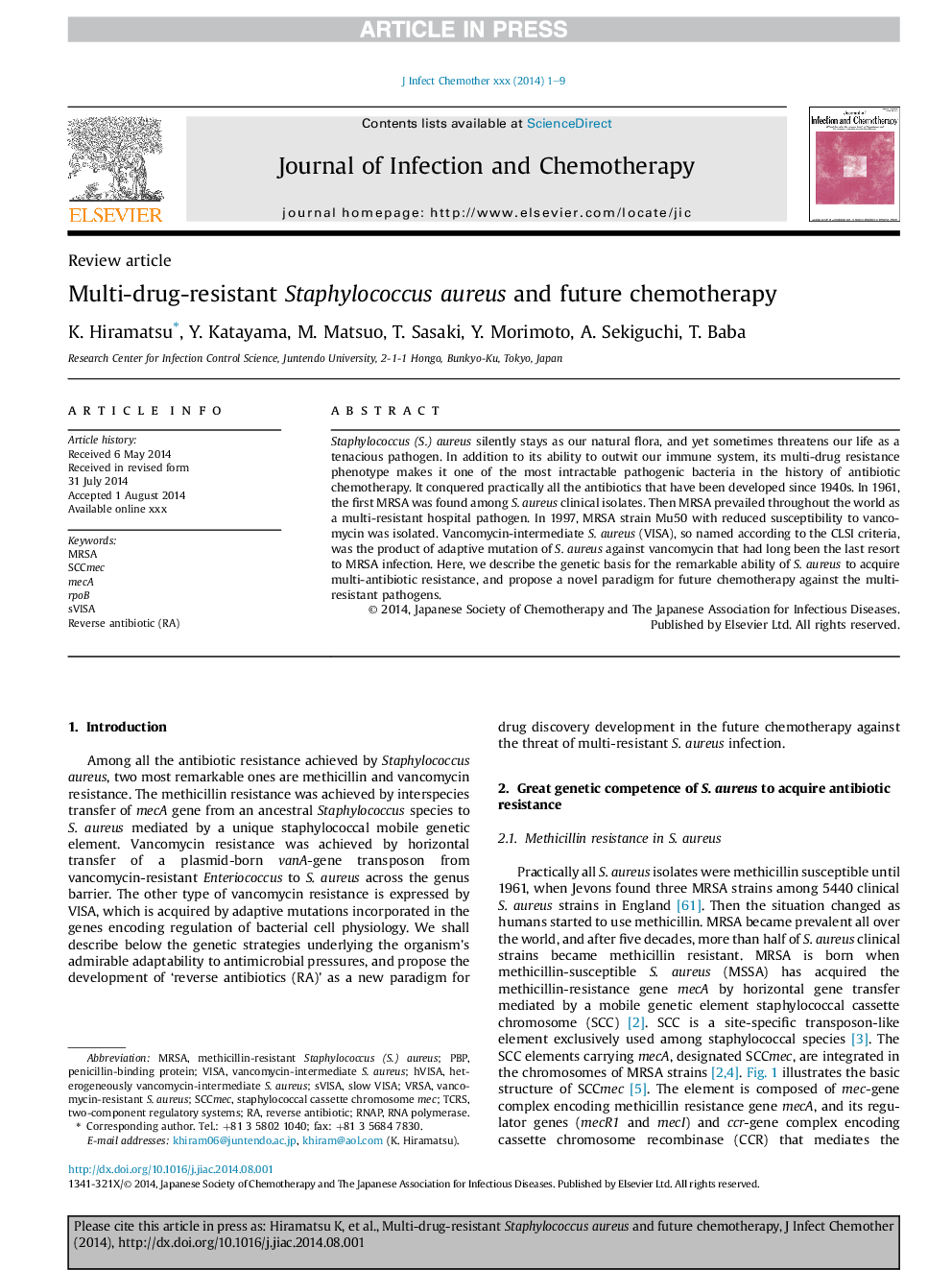| Article ID | Journal | Published Year | Pages | File Type |
|---|---|---|---|---|
| 6123637 | Journal of Infection and Chemotherapy | 2014 | 9 Pages |
Abstract
Staphylococcus (S.) aureus silently stays as our natural flora, and yet sometimes threatens our life as a tenacious pathogen. In addition to its ability to outwit our immune system, its multi-drug resistance phenotype makes it one of the most intractable pathogenic bacteria in the history of antibiotic chemotherapy. It conquered practically all the antibiotics that have been developed since 1940s. In 1961, the first MRSA was found among S. aureus clinical isolates. Then MRSA prevailed throughout the world as a multi-resistant hospital pathogen. In 1997, MRSA strain Mu50 with reduced susceptibility to vancomycin was isolated. Vancomycin-intermediate S. aureus (VISA), so named according to the CLSI criteria, was the product of adaptive mutation of S. aureus against vancomycin that had long been the last resort to MRSA infection. Here, we describe the genetic basis for the remarkable ability of S. aureus to acquire multi-antibiotic resistance, and propose a novel paradigm for future chemotherapy against the multi-resistant pathogens.
Keywords
Related Topics
Life Sciences
Immunology and Microbiology
Applied Microbiology and Biotechnology
Authors
K. Hiramatsu, Y. Katayama, M. Matsuo, T. Sasaki, Y. Morimoto, A. Sekiguchi, T. Baba,
